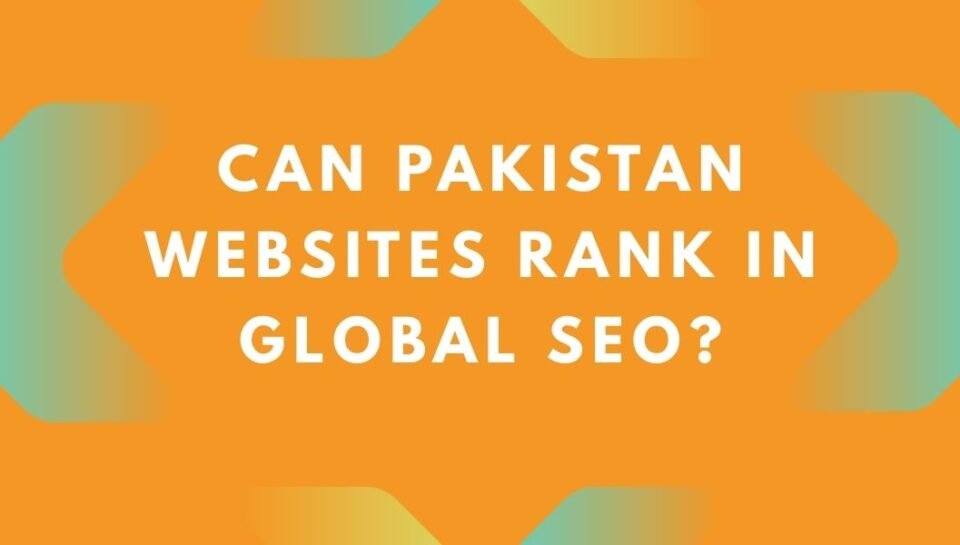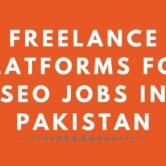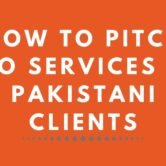
Global search visibility is no longer a luxury for Pakistani businesses. From IT services and SaaS startups to eCommerce brands and exporters, reaching customers in the US, UK, GCC, and beyond can change your growth curve. The key question many teams ask is simple: can Pakistan websites rank in global SEO and compete with established international players? The short answer is yes—if you build the right strategy and operate with global standards.
Can Pakistan Websites Rank in Global SEO?
Yes. Pakistani websites routinely rank on page one for global keywords, especially in niches like software, outsourcing, fintech, edtech, eCommerce, and B2B services. Search engines don’t rank by passport; they rank by relevance, quality, authority, and user experience. If your content satisfies search intent, your site is technically sound, and your brand earns credible backlinks, you can win international SERPs.
Global SEO vs. Local SEO: What’s Different?
Global SEO (also called international SEO) focuses on visibility across multiple countries and languages. It requires deeper attention to intent, language nuances, technical signals, and trust.
Key differences to consider
- Search intent varies by market (US vs. UK vs. UAE). Keyword selection and content framing must reflect local needs.
- Language and localization: Even “English” differs by spelling, tone, and examples (US English vs. British English).
- Technical signals: hreflang, geotargeting, site architecture, and structured data matter more at scale.
- Authority barriers: Competing with global brands requires stronger digital PR, link acquisition, and brand trust signals.
- Compliance and trust: Policies, pricing, payments, and delivery information must match the target market’s expectations.
What It Takes to Rank Internationally from Pakistan
1) World-class content that aligns with intent
Winning content solves users’ problems better than anyone else. Focus on topical authority, not just keyword density.
- Map keywords to search intent (informational, commercial, transactional, navigational).
- Build topic clusters and internal linking to reinforce expertise.
- Publish original research, data-backed guides, and case studies that attract natural links.
- Write in the audience’s preferred dialect and style. Consider separate content for US and UK markets where needed.
2) Technical SEO that meets global standards
- Core Web Vitals: Pass LCP, CLS, INP across top landing pages. Use a CDN, compress images, lazy-load, and optimize third-party scripts.
- Site architecture: Clean URL structures, logical navigation, HTML sitemaps, and strong internal linking.
- Indexation: Submit XML sitemaps, fix crawl errors, manage canonical tags, and avoid duplicate content.
- Internationalization: Implement hreflang correctly for multilingual/multiregional content; use a gTLD (.com) with subfolders (/uk/, /us/) or carefully planned ccTLDs.
- Structured data: Add schema markup (Organization, Product, FAQ, HowTo, Article) to enhance SERP features.
- Mobile-first: Test across devices; ensure responsive design and fast mobile performance.
3) E-E-A-T and brand trust
Google’s E-E-A-T (Experience, Expertise, Authoritativeness, Trust) is crucial, especially for YMYL niches.
- Show real experts: author bios, credentials, LinkedIn profiles, and editorial guidelines.
- Trust pages: About, Contact, physical address, privacy policy, terms, refunds, shipping, and customer support details.
- Reviews and social proof: Showcase third-party ratings, testimonials, certifications, and press mentions.
- Security and payment trust: HTTPS, clear checkout flows, trusted payment gateways, and visible guarantees.
4) Backlinks and digital PR that stand up internationally
- Create linkable assets: data studies, interactive tools, templates, and original visuals.
- Ethical outreach: industry blogs, journalists, podcasts, and niche communities.
- HARO/PR platforms: respond with expert insights to earn high-authority links.
- Diversify anchors and sources; avoid spam networks and paid link schemes that risk penalties.
5) Localization that goes beyond translation
- Local examples, pricing, currency, units, and case studies relevant to each market.
- Adapt CTAs, shipping info, taxes/duties, and return policies by region.
- Consider multilingual SEO for Arabic, Turkish, German, or other target languages using hreflang and native copywriting.
6) Analytics, measurement, and iteration
- Use GSC and GA4 to segment by country and language; track conversions per market.
- Set up rank tracking by location (e.g., Google US, Google UK) and device.
- Run content experiments: titles, intros, structured data, and internal links.
- Analyze server logs to find crawl waste and prioritize high-ROI pages.
In the middle of your global SEO journey, you may consider partnering with specialists; as an example, NB Disruptors is an SEO agency in Pakistan that focuses on international search growth for brands targeting multiple markets.
Common Myths About Ranking from Pakistan
Myth 1: “You must host in the target country to rank.”
Modern CDNs and edge caching largely neutralize server location. Focus on performance, not just location.
Myth 2: “A .pk domain can’t rank internationally.”
ccTLDs (.pk) send geo signals, but content can still rank globally, especially for branded and informational searches. For broad global reach, a .com or other gTLD with country/language folders is often simpler.
Myth 3: “You need a huge budget to outrank global brands.”
You need strategy and consistency more than a massive budget. Niche selection, topical depth, smart PR, and technical excellence can beat bigger competitors.
Myth 4: “Links alone will get you to page one.”
Without intent-matched content, strong UX, and technical health, links won’t sustain rankings.
Example Scenarios and Playbooks
Scenario A: Pakistani eCommerce brand exporting handicrafts to the US/UK
- Keyword strategy: target “handmade [category]”, “ethically sourced [product]”, and long-tail product queries.
- Content: storytelling about artisans, materials, and care guides; rich media; detailed size charts.
- Technical: Product schema, review schema, fast PDPs, and clean faceted navigation.
- Trust: duties/taxes explanations, delivery timelines, returns, and customer reviews.
- PR: partnerships with ethical fashion bloggers, gift guides, and sustainability publications.
Scenario B: SaaS startup in Karachi targeting global SMBs
- Keyword strategy: problem-led “how to [task]” and comparison pages “[Tool A] vs [Tool B]”.
- Content: product-led tutorials, ROI calculators, and API docs for developers.
- Technical: docs subfolder, strong site search, Lighthouse-optimized app landing pages.
- E-E-A-T: named engineers/product managers as authors; transparent pricing and security pages.
- Links: product hunt launches, integrations marketplace listings, and co-marketing with complementary tools.
Scenario C: Edtech publisher targeting the Middle East
- Localization: English and Arabic content with hreflang; region-specific curricula references.
- Content: exam prep hubs, downloadable worksheets, and past papers with structured data.
- Distribution: partnerships with teachers’ networks and education forums.
Data, Benchmarks, and What “Good” Looks Like
- Search engine share: Google commands the vast majority of global searches, so optimizing for Google’s guidelines yields outsized ROI.
- Mobile-first reality: Many markets are predominantly mobile. Optimize for speed and usability on 4G/5G and mid-range devices.
- Core Web Vitals: Aim to pass CWV on your top landing pages. This supports rankings and improves conversion rates.
- Content depth: Pages that fully satisfy intent—covering subtopics, FAQs, comparisons, and next steps—tend to perform better.
- Link velocity: Sustainable, earned links from relevant publications outperform sudden spikes from low-quality sources.
- International targeting: Correct hreflang implementation reduces cannibalization across markets and improves click-through rates.
Pakistan has a large and growing online population and a mature IT services sector. With quality control and consistent execution, there’s no structural barrier preventing Pakistani websites from ranking globally.
Step-by-Step Checklist for Global SEO
- Define markets and personas (e.g., US SMBs, UK enterprise, GCC consumers).
- Select domain strategy: gTLD (.com) with market folders vs. ccTLDs when needed.
- Set up Search Console properties by folder and country targeting where appropriate.
- Perform country-specific keyword research; prioritize by intent and business value.
- Build topic clusters and pillar pages; plan internal links.
- Draft localization guidelines for tone, examples, currency, and compliance details.
- Implement hreflang for multilingual/multiregional pages.
- Optimize Core Web Vitals: CDN, image formats (WebP/AVIF), code splitting, and script hygiene.
- Add structured data (Organization, Product, Article, FAQ) to improve SERP features.
- Create linkable assets; launch outreach and digital PR with a clear editorial calendar.
- Establish E-E-A-T: expert authors, editorial process, policies, and third-party validation.
- Track rankings, CTR, conversions, and assisted revenue by market in GA4/GSC.
- Run quarterly content refreshes based on intent shifts and competitor gaps.
- Audit content cannibalization and consolidate overlapping pages.
- Review spam policies; disavow only when necessary; prioritize prevention over cleanup.
Frequently Asked Questions
Do I need a .com domain to rank globally?
No, but a gTLD (.com, .net, .io) avoids country bias and simplifies international targeting with subfolders. If you already have strong equity on a .pk, you can still rank for many global queries, especially branded and informational ones.
Should I host in the US or UK to target those markets?
Not necessarily. Use a reliable global host with a CDN and focus on latency, uptime, and Core Web Vitals. Performance matters more than physical server location.
How long does global SEO take?
Timelines vary by competition and resources. Many see meaningful traction in 3–6 months, with compounding gains over 9–18 months.
Do I need native writers for each market?
For competitive markets, native editors/writers improve nuance, idioms, examples, and trust. At minimum, use localization editing for market-specific pages.
Is link building risky?
Quality-first PR and outreach are safe; manipulative schemes are risky. Diversify tactics, ensure relevance, and prioritize brand-building over quick wins.
Conclusion:
Global SEO success from Pakistan is a matter of standards, not geography. With intent-led content, robust technical SEO, strong E-E-A-T, and strategic link acquisition, you can earn international rankings and revenue. Choose the right domain structure, localize for each market, measure relentlessly, and invest in assets that deserve links. The path is clear: build value that audiences in your target countries actually need, and search engines will follow. Keywords: global SEO, international SEO, Pakistan websites, rank on Google, country-specific SERPs, content localization, hreflang, Core Web Vitals, E-E-A-T, digital PR, link building, technical SEO, structured data, mobile-first indexing, topical authority, search intent, keyword research, SEO agency in Pakistan.




